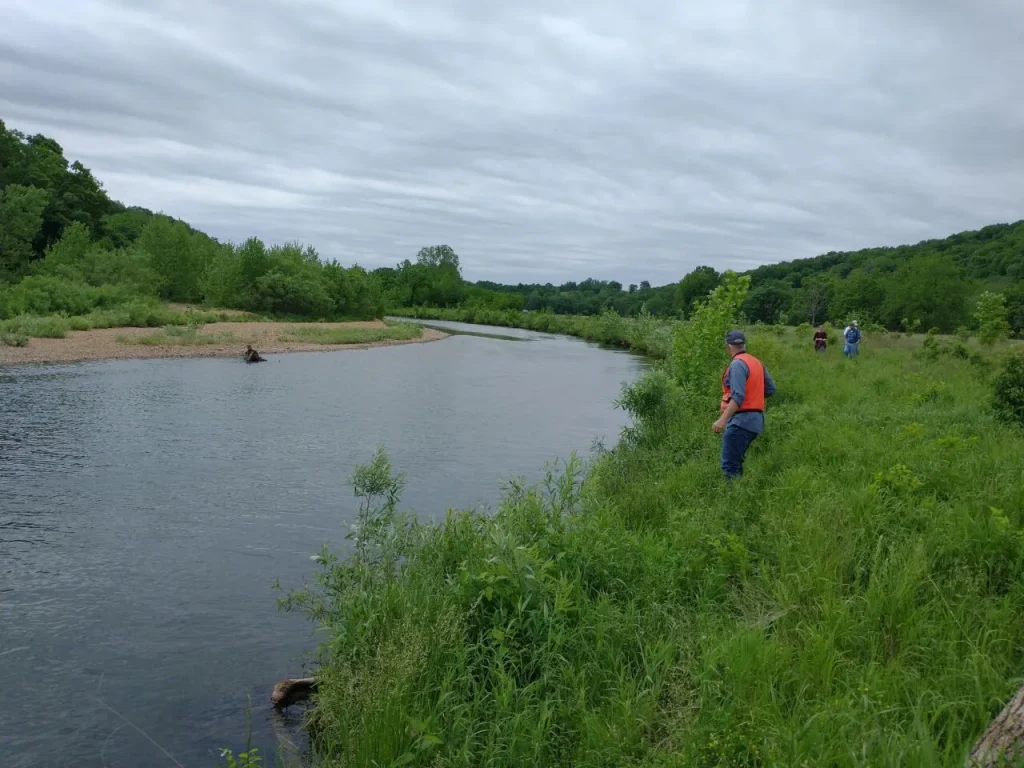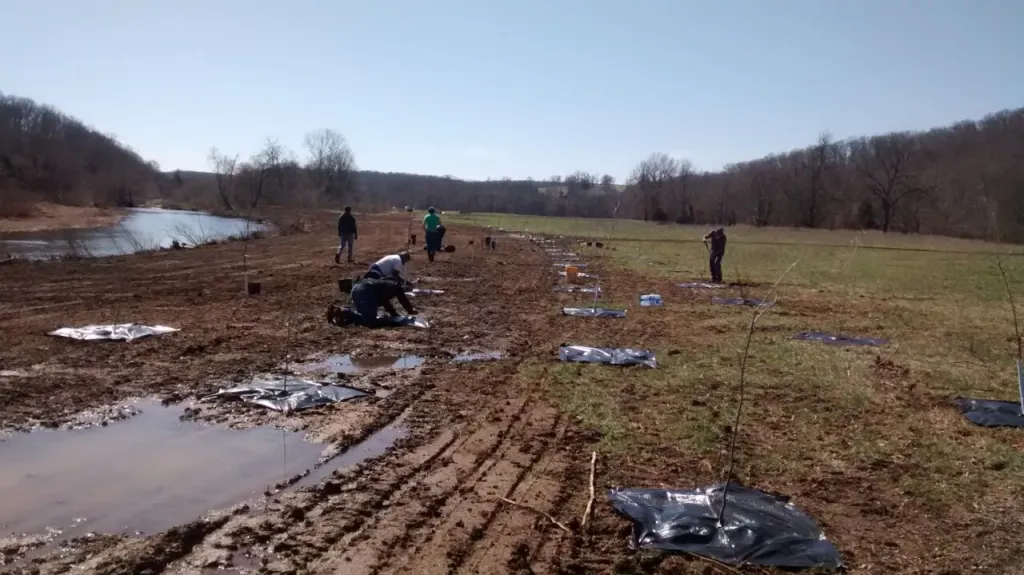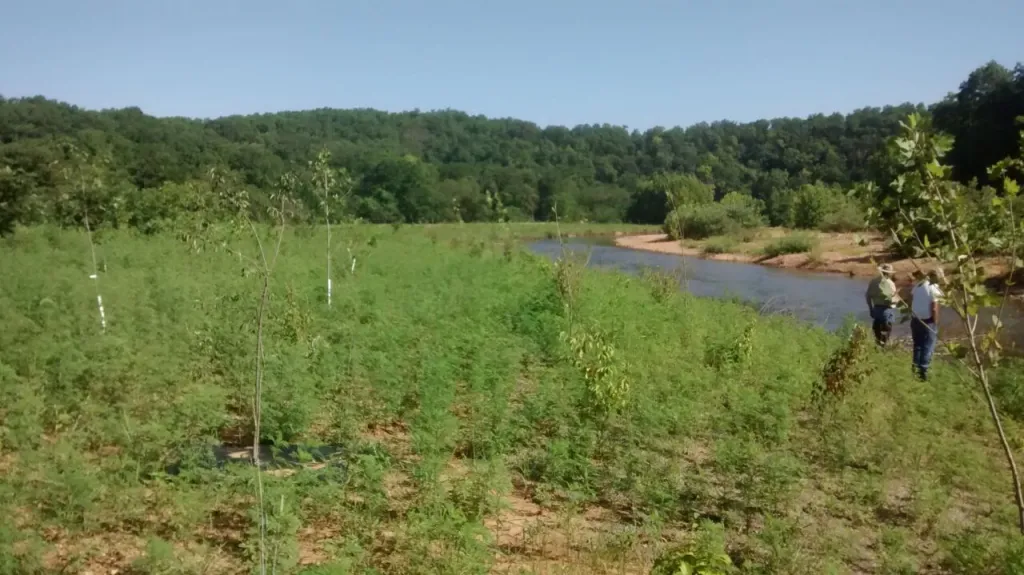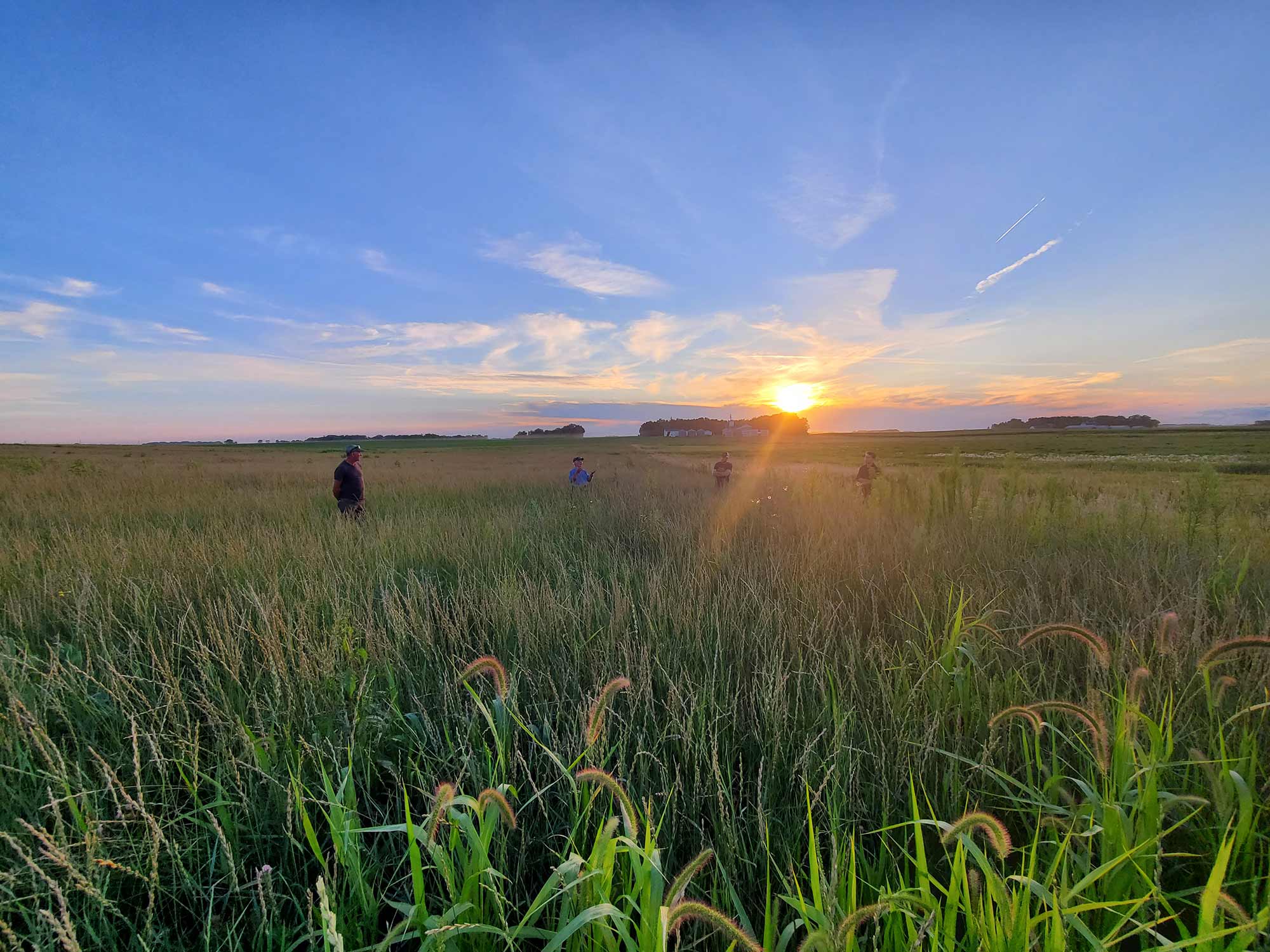Stories & Videos
Landowner-led effort jumpstarts conservation practice adoption


Gary Mullen has fond memories of camping by the banks of Huzzah Creek on the family farm about 70 miles southwest of St. Louis, Mo.
The third-generation farmer has less than fond memories of the aftermath of the Huzzah in flood. Today, with his son Tim and daughter Emily farming alongside him, he knows the conservation practices put in place have made their share of the creek a better place. Doing so also laid the basis for a unique model of cooperation and planning between state and federal conservation agencies, non-profits and landowners that continues today.
“We used to spend a day or two picking logs and stumps out of the field that backed up to the stream,” says Mullen. “Now we go out with the side-by-side and pick up a single load of trash.”
The difference between then and now is the riparian buffer Mullen planted some 20 years ago. The oaks, walnuts and sycamores form a protective barrier between the creek and the field. They protect both the stream and the soil and filter runoff from heavy rains before the water enters the creek. Once in row crops, the field now offers prime pasture for the Mullen’s cow-calf herd, further protecting the soil, reducing erosion and improving water quality.

Unique merging of interests
The riparian buffer and the soil-protecting cover of grass and forbs are connected. One would not have happened without the other, and neither would have happened without a unique merging of interests, objectives and goals.
Mullen wanted to improve and expand his grazing and keep his cattle away from the crowds of weekend tourists floating down the stream. The local Soil and Water Conservation Agency was interested in protecting Mullen’s 3/4-mile frontage on the Huzzah with a riparian buffer and restricting cattle from the creek. The Natural Resources Conservation Service (NRCS) and Farm Service Agency could fund tree planting and fencing. The Missouri Department of Conservation (MDC) could cover drilling the well.
“The limiting factor was electricity for the well pump and for electric fencing,” says Rob Pulliam, fisheries management biologist, MDC. “We had cost share funds for everything but bringing electricity to the site.”
The $6,000 cost put the project in jeopardy until the Ozark Land Trust got involved. The non-profit is dedicated to protecting the natural and geological features of the Ozark region. It has utilized conservation easements, nature preserves and partnerships with other conservation organizations to protect more than 30,000 acres in the Ozarks. It had the funds needed and freedom to dedicate them to the project if Mullen would enter into a landowner agreement on the property.
“Protecting the land in the watershed was critical to protecting the health of the stream,” says Abigail Lambert, river stewardship manager, Ozark Land Trust. “We had grants available for the Huzzah and wanted to do work in the watershed. The question was how to get started. We can have the money, but without a relationship in the community, we don’t have anything,” says Lambert.

Landowner-led committee
For the next eight years, the Mullen project remained unique. Around 2010, a new approach began. Instead of agencies and non-profits suggesting conservation projects to landowners, why not let landowners lead the effort? The result was Shoal Creek Woodlands for Wildlife, a bottom-up, self-organized team of local landowners and natural resource professionals working together to meet the needs of the landscape. Funding would come from a wide array of conservation focused government agencies and non-profits, such as the Ozark Land Trust, Fishers & Farmers Partnership for the Upper Mississippi River Basin and others.
Mullen was asked to recommend landowners for a landowner advisory committee. Their job was to identify natural resource issues in a 63,000-acre focus area between the Huzzah and Courtois Creeks and the Meramec River that needed to be addressed and to guide technical staff in recommended practices.
“I have been involved my whole life with various conservation agency boards,” says Mullen. “This isn’t run the same. With the agencies, people would apply for a project, and we would review it. With this committee, we figure out the objectives and how to reach them. Then Rob and Abigail and others secure the funding, often from multiple sources.”
Clear goals, multiplying projects
The advisory committee was soon up and running. After several meetings they established their goals and how they would reach them. The top three issues were streambank erosion and management followed by pasture productivity improvement and landowner education about timber management and related conservation practices. Fourth was the need for livestock watering systems to facilitate stream exclusion and encourage grazing on flood plains. The final issue was fish and wildlife habitat improvement.
Projects began to fall into place. Over the next three years, 16 landowners installed 34 practices, and more entered the planning process. That was just the beginning. “In 2012 we asked the advisory committee to help develop a marketing plan that would reach target audiences with a message that would resonate from a business perspective, an action plan to do a better job providing conservation products and services to landowners,” explains Pulliam. “Gary was an integral part of how it was put together. He knew what our resources were and how we should involve landowners. He knew the issues of farming and the people. Other members of the committee represented other landowner and influencer segments.”

Neighbor to neighbor invitations
In 2014 a farm tour was announced. A local landowner would talk about practices that had been installed. The advisory committee invited other landowners to the event. While agency staff answered questions, it was the landowner family and advisory committee talking with neighbors that mattered.
“From there, requests for practices and services snowballed,” says Pulliam. “In 2016 we did 49 practices, and then the pandemic hit. The key is that it is locally led. Ideas are spread by word of mouth from folks doing things and sharing what they have done.”
“In one project, we utilized local contractors referred to us by the committee,” recalls Lambert. “The contractors then referred us to other landowners who needed similar practices done. It is a connected web.”
Web of shared work
Mullen sees a real value in the unique nature of the Shoal Creek project. He notes that a lot of landowners are leery of government agencies and groups like the Ozark Land Trust, but they know members of the advisory committee. That makes a difference. He likes the idea that projects are not limited to the rules of any one funding group or way of thinking, even his own.
“We’ve done some things already that I didn’t think would work, and they did,” he says. “We are getting ready to do some things that will take five or ten years to see if they work. I hope they will.”
Lambert is confident the combination of landowners, natural resource agencies and conservation organizations like hers will continue to produce benefits. “We now have five miles along the Huzzah that have been protected through either conservation practices or easements, and we are building on that. Having the landowner advisory committee has been vital to that, but also to fundraising,” she adds. “When we can tell foundations the landowners committee has endorsed a grant application, it makes a real difference.”
“Equally if not more important, it is a way for landowners to share wants and needs that benefit them and our natural resources, both of which we in the natural resource community care about,” adds Lambert. “The landowners are part and parcel of the landscape we value and want to protect.”
— Story by Jim Ruen
Fishers & Farmers Partnership for the Upper Mississippi River Basin supports collaborative, local, farmer-driven work for healthy streams, farms and fish habitat. For more than a decade it has provided funds, connection, and leadership development to projects in Iowa, Illinois, Minnesota, Missouri and Wisconsin, including this Missouri project. Learn about Fishers & Farmers Partnership funding and apply here.

